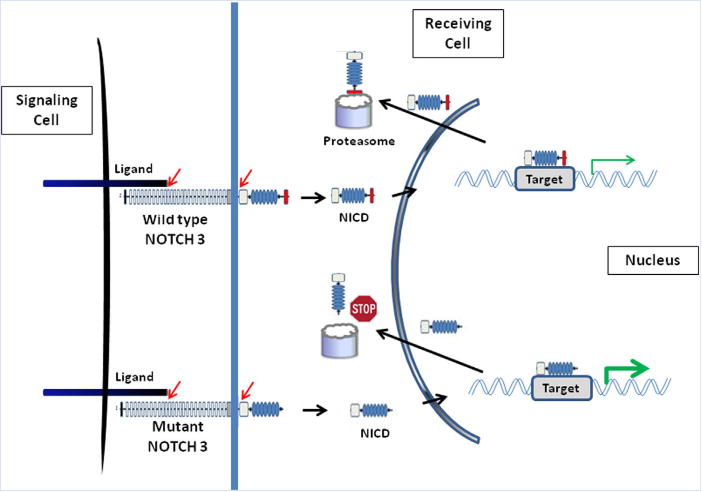FIG. 5.

Diagram of normal and abnormal NOTCH signaling. Binding of a Notch ligand to the membrane bound NOTCH receptor triggers proteolytic cleavage (indicated by red arrows) and release of the Notch intracellular domain (NICD). NICD translocates to the nucleus, where it binds to specific transcription factors (not shown). This activated complex directs the transcription of target genes. In wildtype NOTCH3, the PEST sequence (red box) serves as a signal for protein degradation by the proteasome machinery and controls the intracellular half-life of NICD. In mutant NOTCH3, truncation of the C-terminal PEST domain presumably impairs proteasome degradation of NICD (Stop sign), resulting in an extended half-life of NICD and prolonged signaling (gain-of-function effect).
